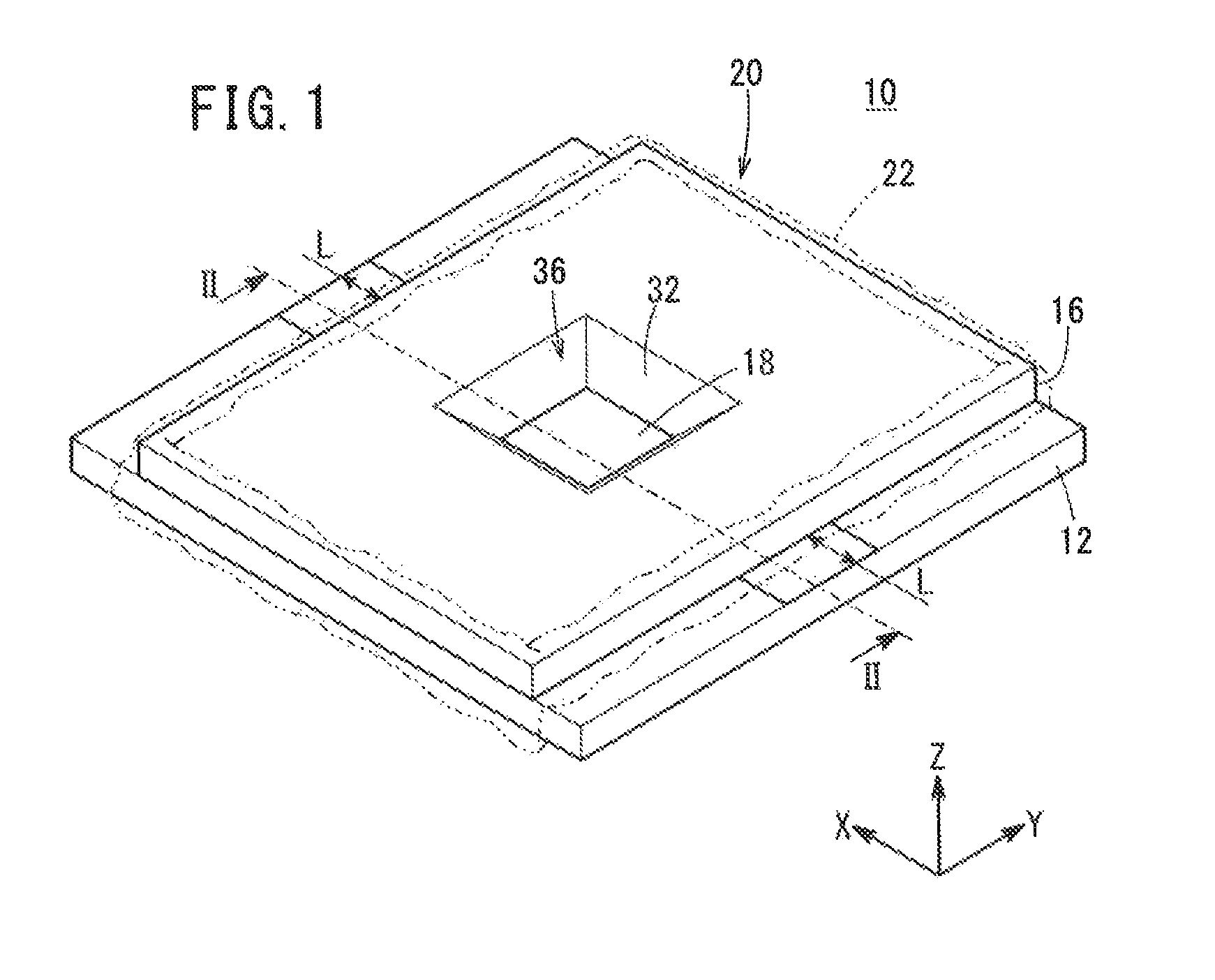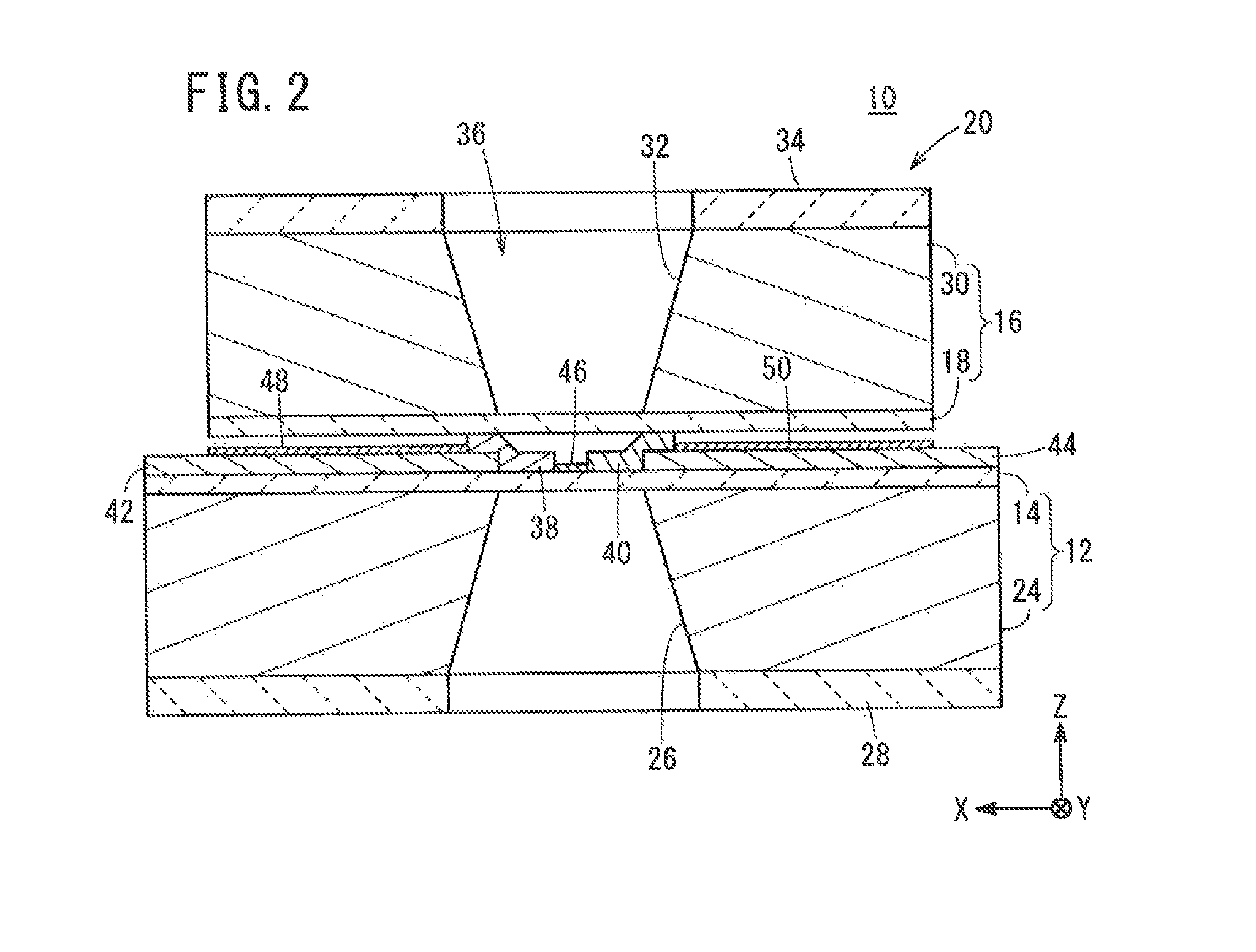Analytical cell
an analytical cell and cell technology, applied in the field of analytical cells, can solve the problems of difficult selective analysis of only the current generated in the electrode reaction, difficult to accurately observe the electrode reaction of the analysis subject, etc., and achieve the effect of preventing short-circuiting, facilitating and efficient acquisition, and facilitating and efficient us
- Summary
- Abstract
- Description
- Claims
- Application Information
AI Technical Summary
Benefits of technology
Problems solved by technology
Method used
Image
Examples
first embodiment
[0069]An analytical cell 10 according to a first embodiment will be described below with reference to FIGS. 1 to 4. FIG. 1 is an overall schematic perspective view of the analytical cell 10. FIG. 2 is a cross-sectional view taken along line II-II of FIG. 1 in the direction of the arrows. FIG. 3 is a plan view of a transmission membrane 14 side of a first holder 12 in the analytical cell 10. FIG. 4 is a plan view of a transmission membrane 18 side of a second holder 16 in the analytical cell 10. To facilitate understanding, in the following description, the X-axis, Y-axis, and Z-axis directions shown in FIGS. 1 to 4 are defined as width, depth, and height directions, respectively. In addition, in the X-axis, Y-axis, and Z-axis directions, the tip of each arrow is defined as one end, and the base end of the arrow is defined as another end.
[0070]The analytical cell 10 contains the first holder 12 and the second holder 16 stacked with an electrolytic solution interposed therebetween. Mo...
second embodiment
[0121]An analytical cell 88 according to a second embodiment will be described below with reference to FIGS. 36 to 39. FIG. 36 is an overall schematic perspective view of the analytical cell 88. FIG. 37 is a cross-sectional view of the analytical cell 88 taken along line XXXVII-XXXVII of FIG. 36 in the direction of the arrows. FIG. 38 is a plan view of a transmission membrane 14 side of a first holder 90 in the analytical cell 88. FIG. 39 is a plan view of a transmission membrane 18 side of a second holder 92 in the analytical cell 88. The components shown in FIGS. 36 to 39, which have equal or similar functions and effects to those shown in FIGS. 1 to 35C, are denoted by the same reference numerals, and detailed explanations of such features are omitted.
[0122]The analytical cell 88 contains the first holder 90 and the second holder 92, instead of the first holder 12 and the second holder 16 that are used in the analytical cell 10. Further, the first holder 90 contains a substrate 9...
PUM
| Property | Measurement | Unit |
|---|---|---|
| size | aaaaa | aaaaa |
| permeability | aaaaa | aaaaa |
| thickness | aaaaa | aaaaa |
Abstract
Description
Claims
Application Information
 Login to View More
Login to View More - R&D
- Intellectual Property
- Life Sciences
- Materials
- Tech Scout
- Unparalleled Data Quality
- Higher Quality Content
- 60% Fewer Hallucinations
Browse by: Latest US Patents, China's latest patents, Technical Efficacy Thesaurus, Application Domain, Technology Topic, Popular Technical Reports.
© 2025 PatSnap. All rights reserved.Legal|Privacy policy|Modern Slavery Act Transparency Statement|Sitemap|About US| Contact US: help@patsnap.com



